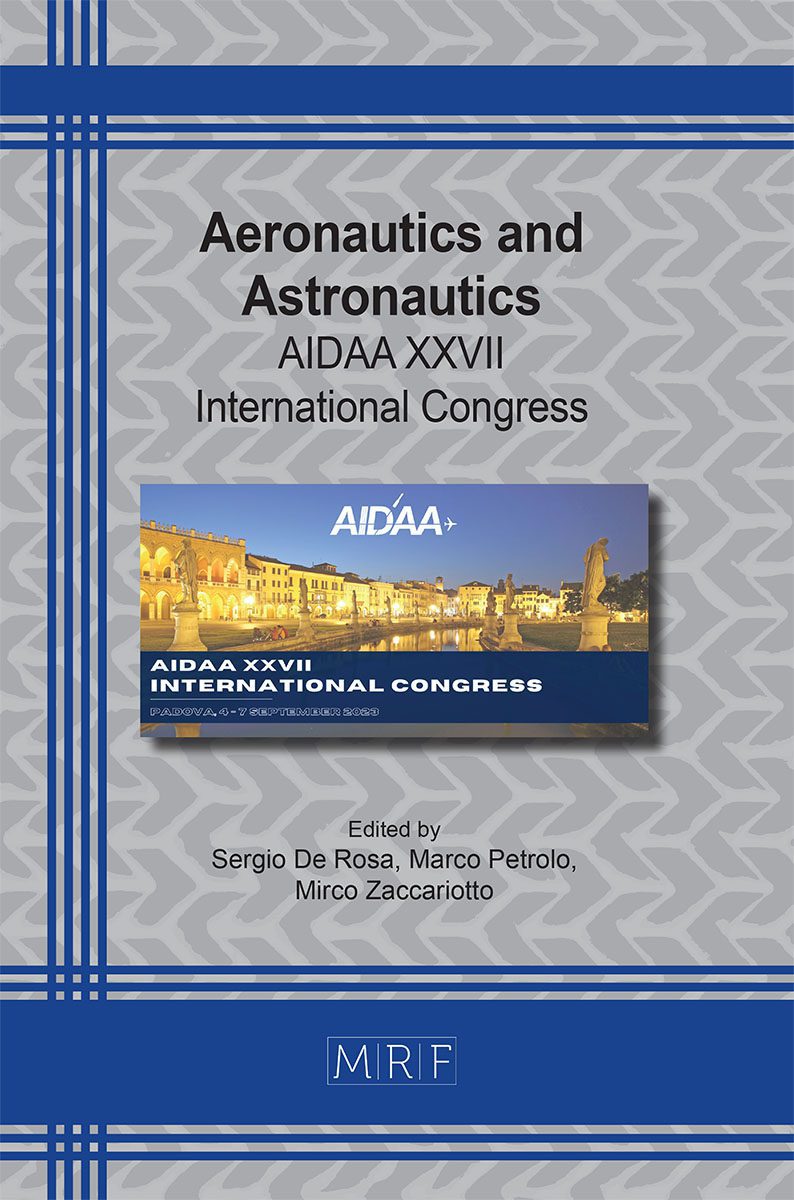Overview of spacecraft fragmentation testing
Stefano Lopresti, Federico Basana, Lorenzo Olivieri, Cinzia Giacomuzzo, Alessandro Francesconi
download PDFAbstract. Spacecraft fragmentation due to collisions with space debris is a major concern for space agencies and commercial entities, since the production of collisional fragments is one of the major sources of space debris. It is in fact believed that, in certain circumstances, the increase of fragmentation events could trigger collisional cascade that makes the future debris environmental not sustainable. Experimental studies have shown that the fragmentation process is highly complex and influenced by various factors, such as the material properties, the velocity and angle of the debris impact and the point of collision (e.g. central, glancing, on spacecraft appendages). In recent years, numerous impact tests have been performed, varying one or more of these parameters to better understand the physics behind these phenomena. In this context some tests have been also performed at the hypervelocity impact facility of the university of Padova. This paper provides an overview of the main experiments performed, the most critical issues observed and proposes some future directions for further research. Moreover, it summarizes the current state of research in spacecraft fragmentation, including the methods and techniques used to simulate debris impacts, the characterization of fragment properties and the analysis of the resulting debris cloud.
Keywords
Space Debris, Fragmentation Testing, Cumulative Distribution, Satellites Break Up
Published online 11/1/2023, 5 pages
Copyright © 2023 by the author(s)
Published under license by Materials Research Forum LLC., Millersville PA, USA
Citation: Stefano Lopresti, Federico Basana, Lorenzo Olivieri, Cinzia Giacomuzzo, Alessandro Francesconi, Overview of spacecraft fragmentation testing, Materials Research Proceedings, Vol. 37, pp 513-517, 2023
DOI: https://doi.org/10.21741/9781644902813-112
The article was published as article 112 of the book Aeronautics and Astronautics
![]() Content from this work may be used under the terms of the Creative Commons Attribution 3.0 license. Any further distribution of this work must maintain attribution to the author(s) and the title of the work, journal citation and DOI.
Content from this work may be used under the terms of the Creative Commons Attribution 3.0 license. Any further distribution of this work must maintain attribution to the author(s) and the title of the work, journal citation and DOI.
References
[1] A. Rossi et al, “Modelling the evolution of the space debris population,” Planet Space Sci, 1988.
[2] J.-R. Ribeiro et al, “Evolution of Policies and Technologies for Space Debris Mitigation Based on Bibliometric and Patent Analyses,” Space Policy, pp. 40-56, 2018. https://doi.org/10.1016/j.spacepol.2018.03.005
[3] D. McKnight, R. Maher and L. Nag, “Refined algorithms for structural breakup due to hypervelocity impact,” International Journal of Impact Engineering, pp. 547-558, 1995. https://doi.org/10.1016/0734-743X(95)99879-V
[4] T. J. Ringrose, H. W. Doyle, P. S. Foster and al, “A hypervelocity impact facility optimised for the dynamic study of high pressure shock compression,” Procedia Engineering, 2017. https://doi.org/10.1016/j.proeng.2017.09.756
[5] A. Angrilli, D. Pavarin, M. De Cecco and A. Francesconi, “Impact facility based upon high frequency two-stage,” Acta Astronautica, pp. 185 – 189, 2002. https://doi.org/10.1016/S0094-5765(02)00207-2
[6] A. J. Piekutowski and K. L. Poormon, “Development of a three-stage, light-gas gun at the University of Dayton Research Institute,” International Journal of Impact Engineering, 2006. https://doi.org/10.1016/j.ijimpeng.2006.09.018
[7] J. Liou, J. Opiela, H. Cowardin, T. Huynh, M. Sorge, C. Griffice, P. Sheaffer, N. Fitz-Coy and M. Wilson, “Successful Hypervelocity Impacts of,” NASA Orbital Debris Quarterly News, pp. 3-5, 2014.
[8] H. Cowardin, J.-C. Liou, P. Anz-Meador, M. Sorge, J. Opiela, N. Fitz-Coy, T. Huynh and P. Krisko, “Characterization of orbital Debris via Hiper-velocity laboratory-based Tests,” in European Conference on Space Debris, 2017.
[9] M. Rivero, B. Shiotani, M. Carrasquilla, N. Fitz-Coy, J.-C. Liou, M. Sorge, T. Huynh, J. Opiela, P. Krisko and H. Cowardin, “DebriSat fragment Characterization System and Processung Status,” in IAC, Bremen, Germany, 2018.
[10] M. Rivero, J. Kleespies and K. Patankar, “Characterization of Debris from the DebriSat Hypervelocity Test,” in IAC, 15.
[11] S.-W. Lan, S. Liu, Y. Li, F.-W. Ke and j. Huang, “Debris area distribution of spacecraft under hypervelocity impact,” Acta Astronautica, vol. 105, pp. 75-81, 2014. https://doi.org/10.1016/j.actaastro.2014.08.011
[12] H. Abdulhamid, D. Bouat, A. Collè and Al, “On-ground HVI on a nanosatellite. Impact test, fragments recovery and characterization, impact simulations.,” in 8th European Conference in Space Debris, 2021.
[13] L. Olivieri, P. A. Smocovich, C. Giacomuzzo and A. Francesconi, “Characterization of the fragments generated by a Picosatellite impact experiment,” International Journal of Impact Engineering, vol. 168, 2022. https://doi.org/10.1016/j.ijimpeng.2022.104313































